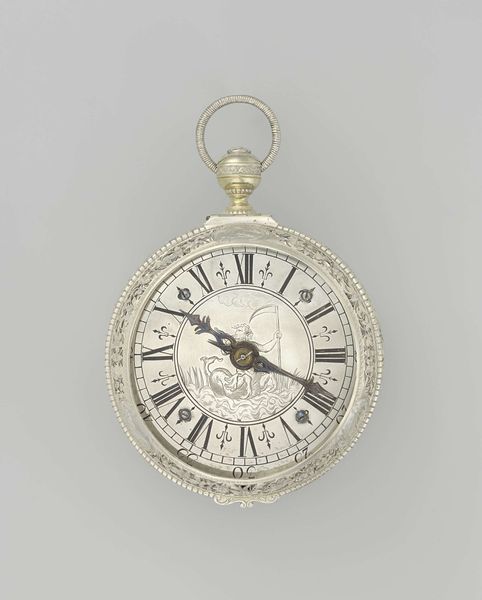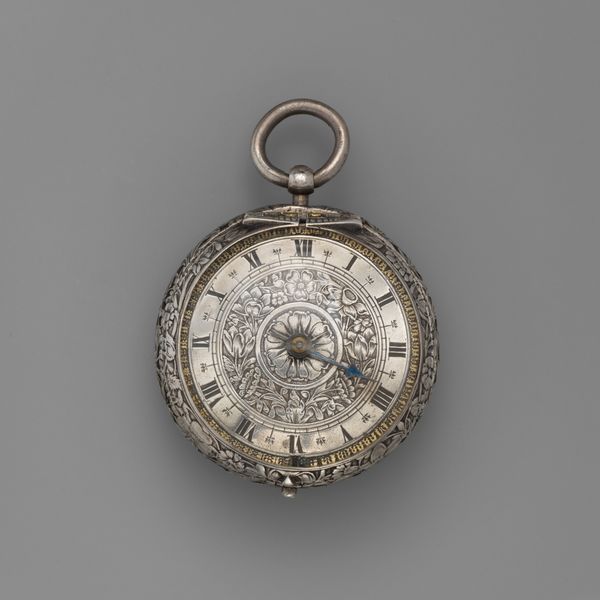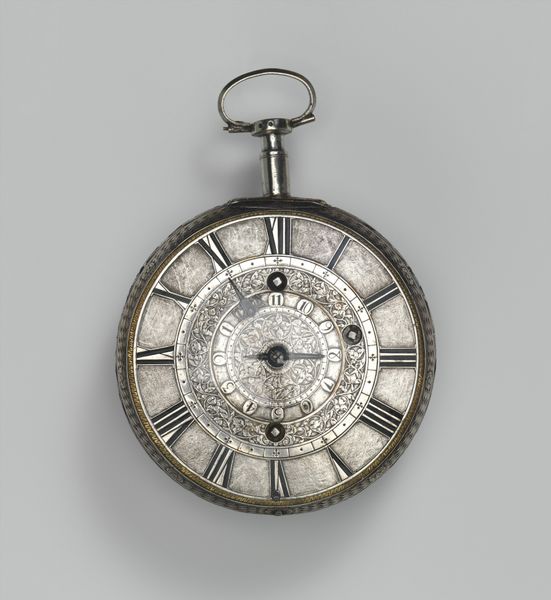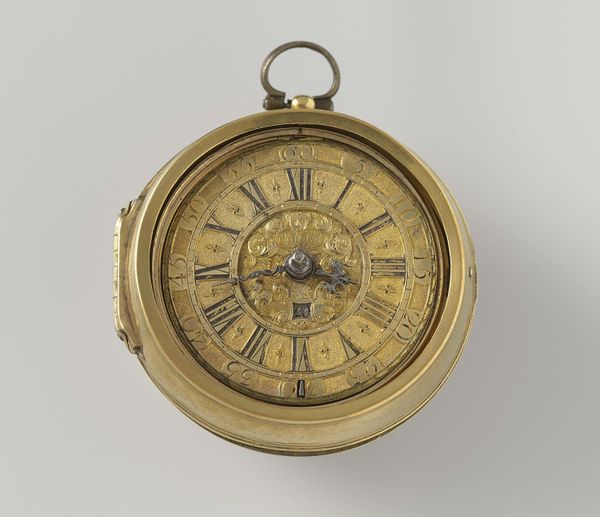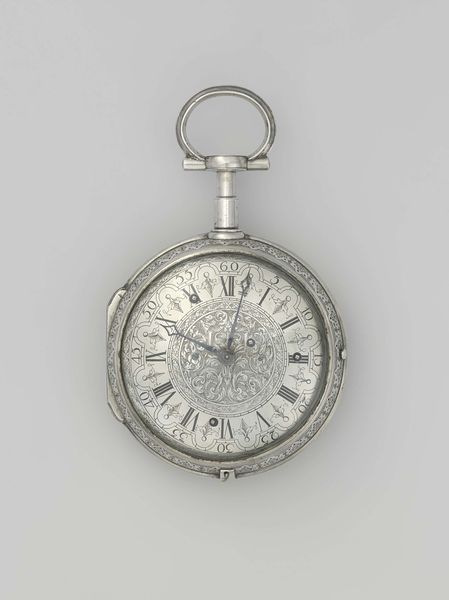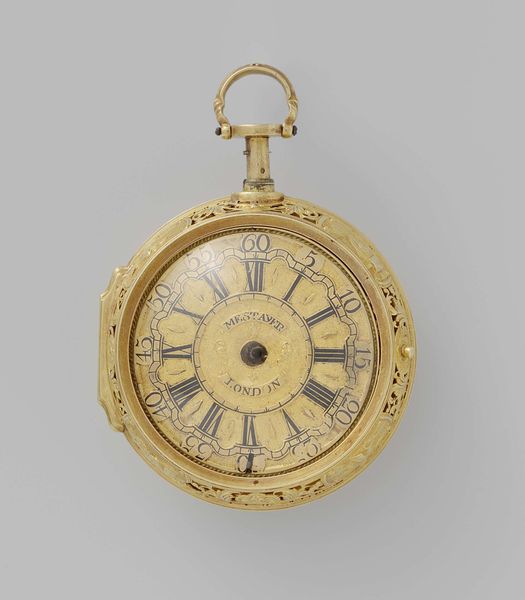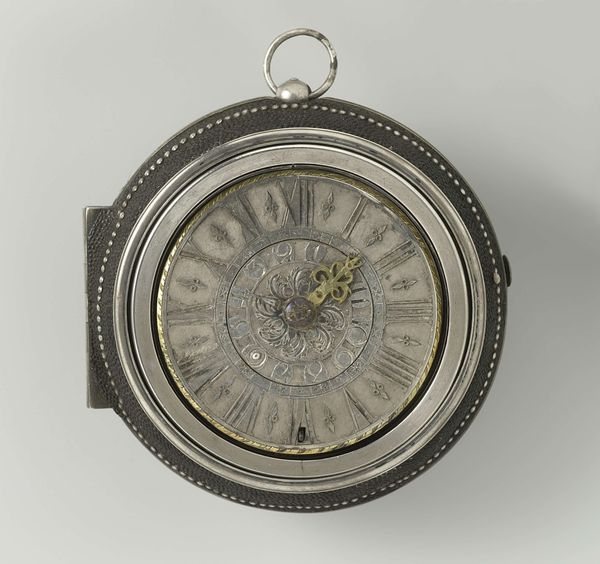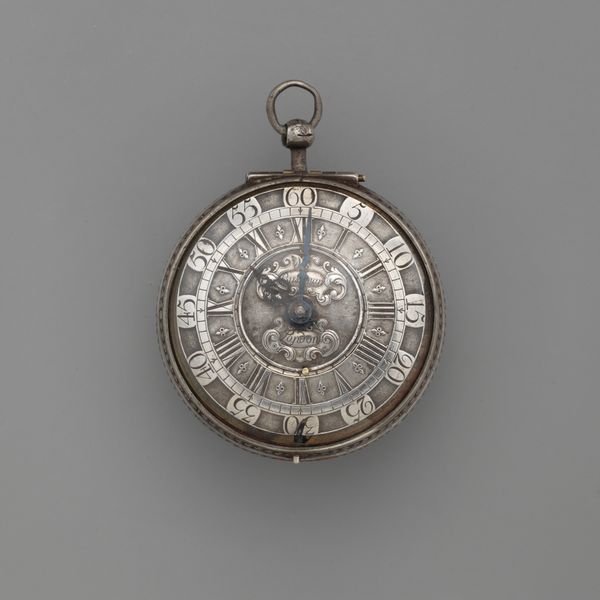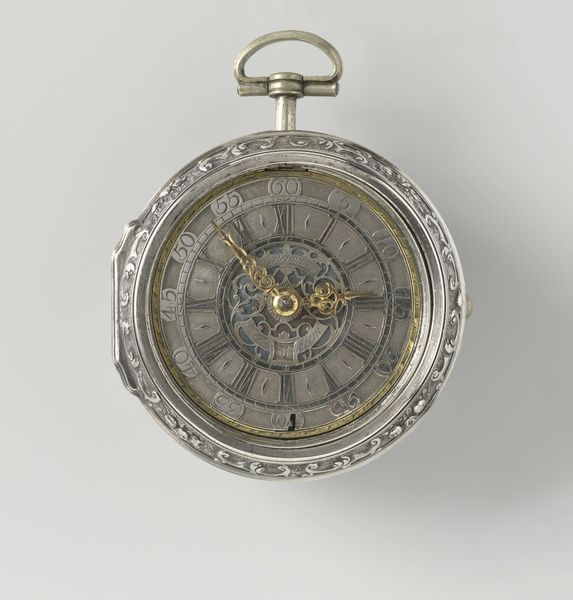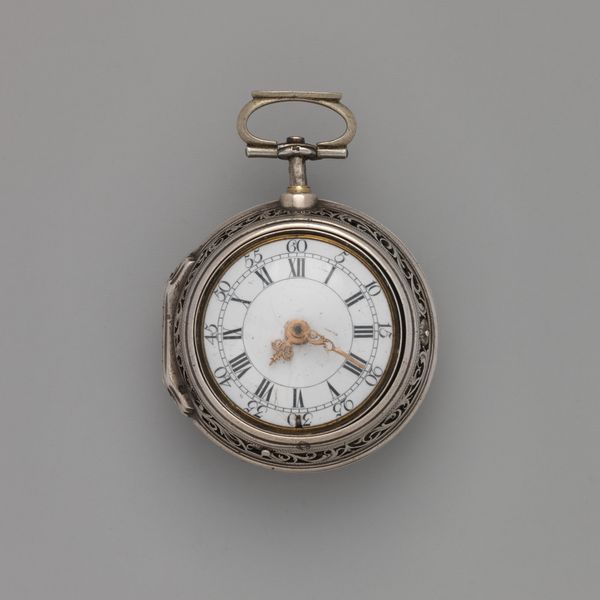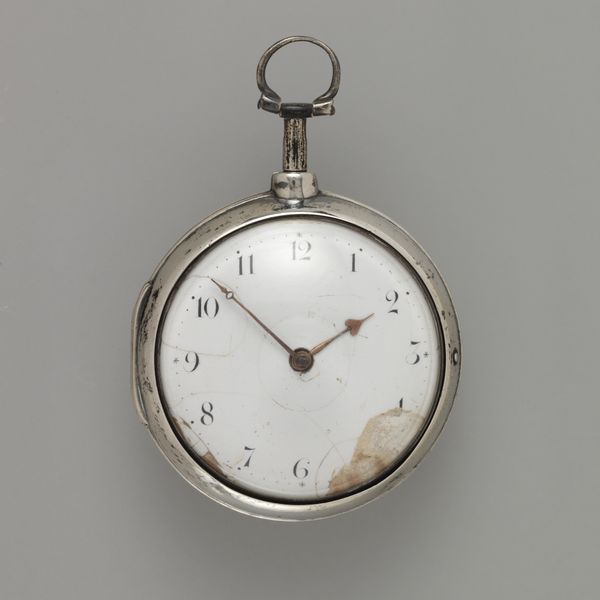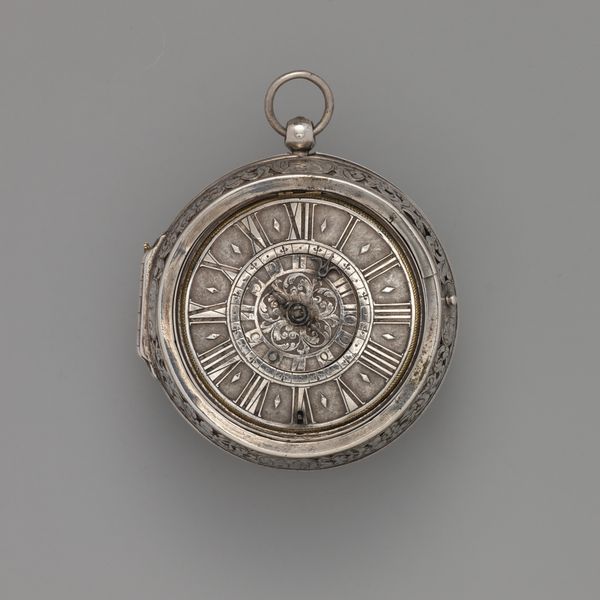
silver, metal
#
silver
#
baroque
#
metal
#
decorative-art
Dimensions: diameter 5.3 cm, diameter 6.0 cm
Copyright: Rijks Museum: Open Domain
Editor: Here we have a silver pocket watch, crafted by Pieter Klock around 1710-1720. It’s so ornate! All that tooling on the case. What stands out to you? Curator: I'm immediately drawn to the material itself. The use of silver, meticulously worked. This wasn’t just about telling time, was it? It was about demonstrating wealth, but also about the immense skill required in metalworking. Who would have had the time to create such an intricate object? And who would have bought it? Editor: So it's like, a display of both the watchmaker's skill and the owner’s affluence? Curator: Precisely. And beyond mere display, it points to a complex web of labor and consumption. Think of the mining of the silver, the crafting of the tools, the watchmaker himself and the artisan responsible for the 'tooled outer case', and ultimately, the person whose life allowed them such an indulgence. Each stage speaks to broader socio-economic structures. What can we determine about that socioeconomic context just from this material, do you think? Editor: That during the Baroque period there was wealth among the elite. But even a ‘simple’ item like a watch, it's not really simple because a lot of resources had to be used. I mean, people extracted and molded and then assembled this beautiful watch. Curator: Exactly! This wasn't an 'art object' in the traditional sense, hanging on a wall for contemplation. It was an object of everyday use elevated by craftsmanship. It challenges our easy categorizations, doesn’t it? Editor: I hadn’t really thought about an object like this carrying so much information beyond just telling time. Curator: Right? It reveals how deeply intertwined aesthetics, labor, and social status truly are, which makes one contemplate more carefully on production!
Comments
No comments
Be the first to comment and join the conversation on the ultimate creative platform.

